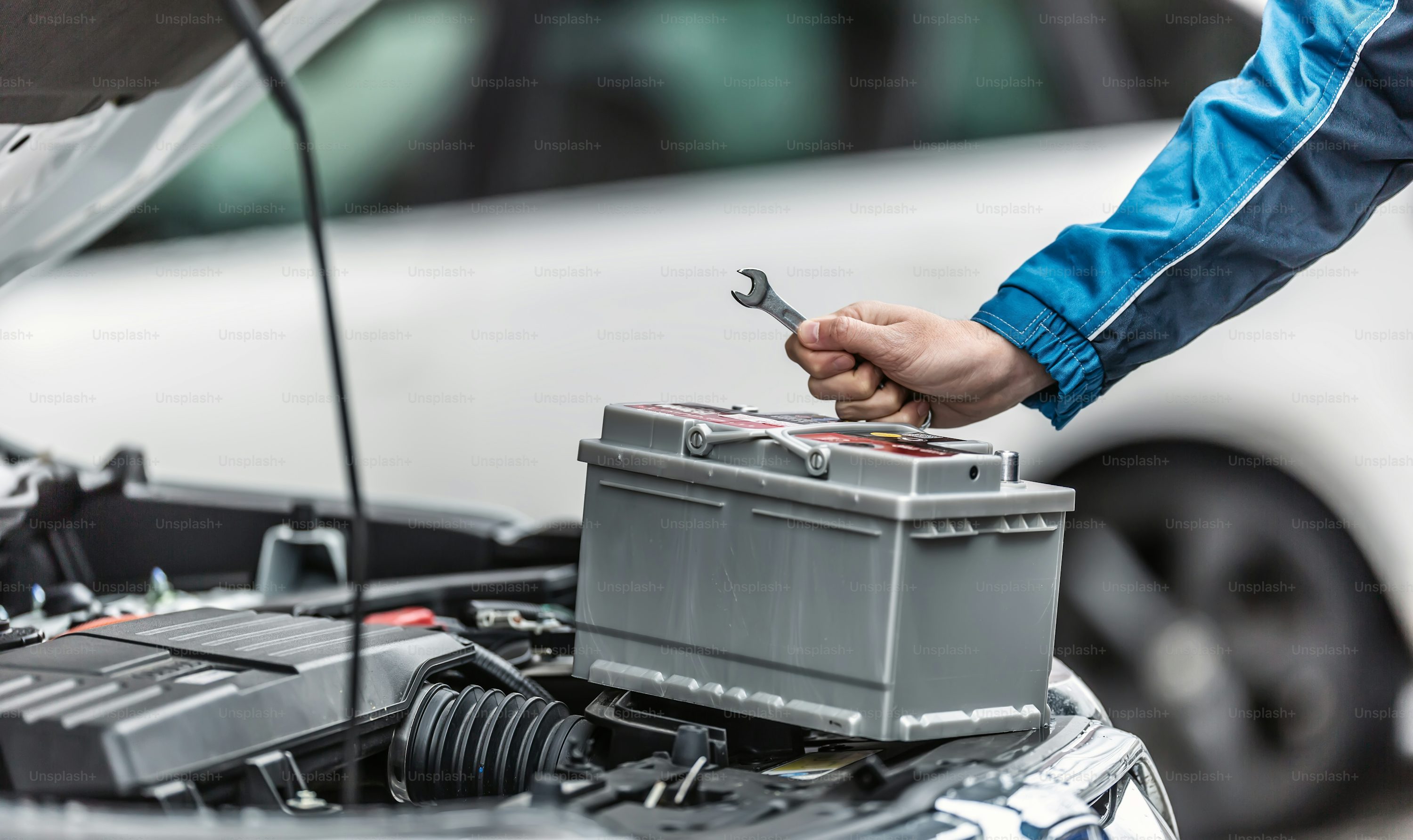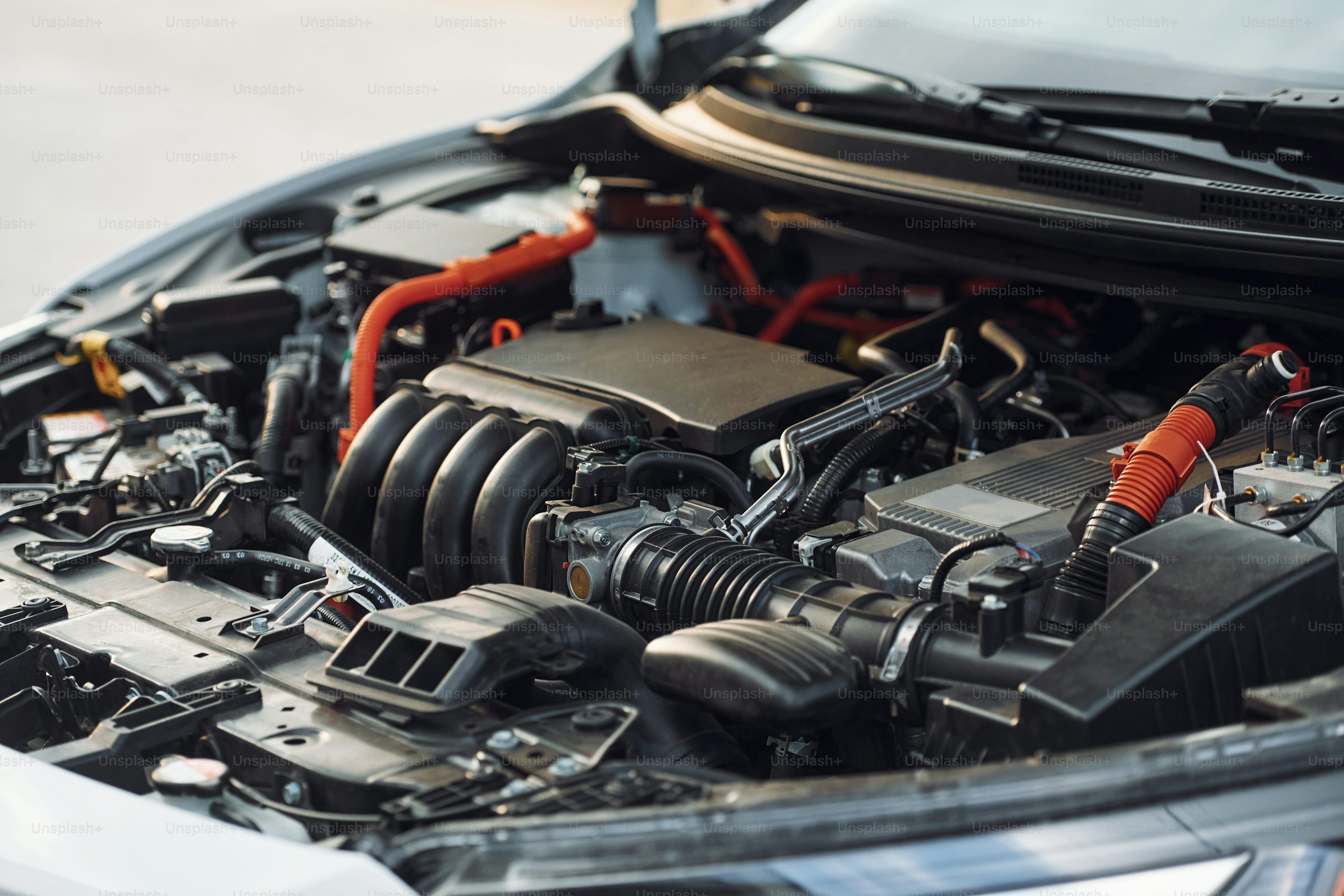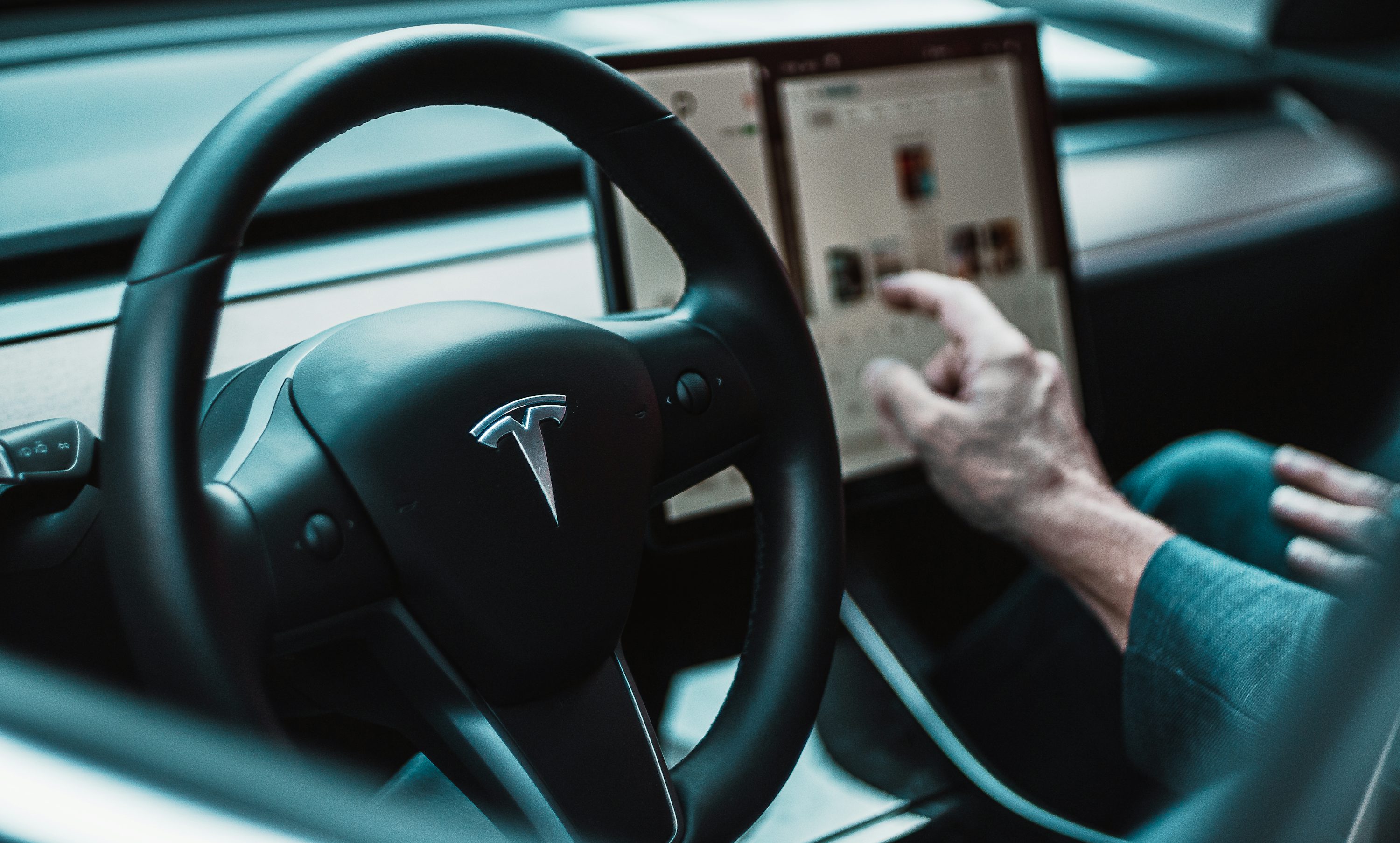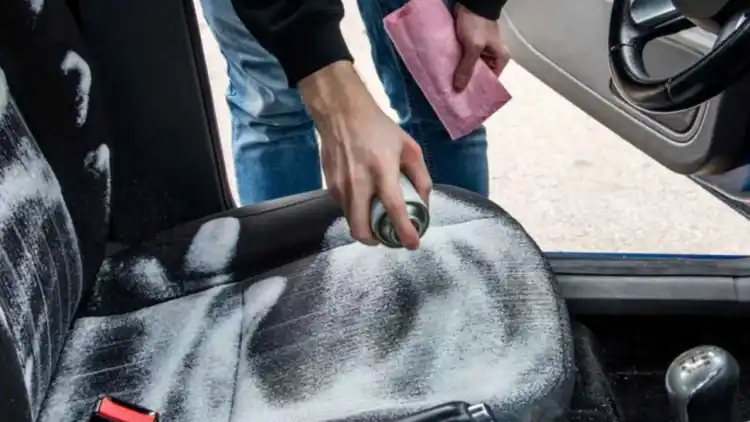- Your Guide to Starting a Car with a Dead Battery
- Important Car Battery Safety Tips
- When to Consider Replacing Your Car Battery
- Frequently Asked Questions (FAQ)
Car won't start? A dead battery can ruin your day. Learn three easy ways to get your vehicle running again, even without a charged car battery.
Your Guide to Starting a Car with a Dead Battery
Having a car that won't start is frustrating. Usually, a dead car battery is the reason. But don't worry! You don't always need a mechanic right away. We'll show you three simple and effective methods to get your vehicle going again. These tips can help you in an emergency when your car battery lets you down.
Method 1:Use Jumper Cables with Another Vehicle
This is one of the most common ways to start a car with a dead battery. It needs another working car and a set of jumper cables. This method works by getting a quick power boost from the other car's healthy battery.
Here's how to do it safely:
Position the Cars: First, park the working car very close to your vehicle. Make sure they are not touching each other. Turn off both cars and ensure their parking brakes are on.
Connect Red to Positive (Dead Battery): Take one red jumper cable clamp. Attach it firmly to the positive (+) terminal of your car's dead battery. The positive terminal usually has a plus sign and is often larger.
Connect Other Red to Positive (Donor Battery): Take the other red clamp. Attach it to the positive (+) terminal of the working car's battery.
Connect Black to Negative (Donor Battery): Now, take one black jumper cable clamp. Connect it to the negative (-) terminal of the working car's battery.
Ground the Last Black Clamp: This is a key safety step. Take the last black clamp and attach it to an unpainted metal part on your car. Choose something sturdy like an engine bolt or a metal bracket. Do not connect it to your dead battery's negative terminal. This grounding helps prevent sparks near the battery gases.
Start the Donor Car: Start the engine of the working car first. Let it run for a few minutes. This allows its alternator to charge your dead car battery slowly.
Start Your Car: After waiting for about 3 to 5 minutes, try to start your car. It should crank up now.
Important Tip: Let the working car charge your dead battery for a few minutes (3-5 minutes is good) before you try to start your engine. This gives a little stored energy to your battery, making it easier to start. Make sure your car runs for at least 15-20 minutes after starting, or drive it to let the alternator fully recharge the car battery.
Method 2:Push-Start a Manual Transmission Car
If you drive a manual transmission car, and your car battery is dead, you might be able to push-start it. This method uses the car's movement to turn the engine over, basically "jump-starting" it without another vehicle.
Warning: This method only works for cars with a manual gearbox. It will not work for automatic cars, electric vehicles, or most hybrid cars.
Follow these steps:
Turn On Ignition: Get into your car and turn the ignition key to the "ON" position. Do not try to start the engine. You just need the car's electrical systems to be ready.
Prepare the Gear: Press the clutch pedal all the way down with your left foot. Then, shift the gear stick into second gear.
Get a Push: Have friends or family push your car from behind. They need to push hard and steadily until the car is moving at about 8 to 13 kilometers per hour (5-8 miles per hour). Make sure the road is flat or slightly downhill for easier pushing.
Release Clutch and Give Gas: Once the car is moving fast enough, quickly release the clutch pedal while gently pressing the accelerator pedal (gas). The movement of the wheels will turn the engine.
Return to Neutral: As soon as the engine catches and starts, press the clutch pedal down again and shift the car into neutral. Keep the engine running.
Safety First: Make sure the area is clear and safe before attempting a push-start. Choose a road that has no traffic and is flat or slightly downhill. This makes it easier and safer.
Method 3:Use a Portable Jump Starter
A portable jump starter is a lifesaver. This device is a compact, self-contained power pack that can give your dead car battery the boost it needs. It's super handy because you don't need another car.
Here’s how to use one:
Charge Your Device: Always make sure your portable jump starter is fully charged before you need it. Check its battery level regularly, especially before long trips.
Connect to Battery Terminals: Take the red cable from the jump starter and connect it to the positive (+) terminal of your car's battery. Then, take the black cable and connect it to the negative (-) terminal of your car's battery. Most modern jump starters have built-in safety features to prevent sparks or wrong connections.
Wait for Confirmation: Turn on the jump starter. Many models have an indicator light that tells you when the connection is good and it's ready to use. Wait for this light.
Crank the Engine: Once the indicator shows 'ready', try to start your car within 5 to 10 seconds. You want to use the power while it's fresh.
Remove the Device: As soon as your car engine starts, immediately remove the portable jump starter from your car battery terminals. Disconnect the black cable first, then the red cable.
Modern Power: Did you know that new lithium jump starter models available today offer much more power? For example, 2025 versions can provide 40% more starting power compared to models from 2020. This means they are even better at waking up a very dead car battery. You can often find a reliable one for under 300 AED/SAR.
Important Car Battery Safety Tips
Starting a car with a dead battery can be risky if not done right. Always put safety first.
Avoid Metal Contact: When connecting jumper cables, be very careful not to let the metal clamps touch each other, or touch any other metal parts of the car. This can cause dangerous sparks or even damage your car's electrical system.
No Negative to Battery: Never connect the negative (-) jumper cable clamp directly to the negative (-) terminal of the dead car battery. Always ground it to an unpainted metal part of the car's engine block or frame. This helps avoid sparks near explosive battery gases.
Check for Damage: Before you try to jump-start or push-start, take a quick look at your car battery. If it looks swollen, cracked, or is leaking any fluid, do not attempt to start it. This means the battery is severely damaged and needs professional help.
Wear Protection: It's a good idea to wear protective gloves and safety eyewear, like goggles, when working with car batteries. Battery acid can be very corrosive, and sparks can be harmful to your eyes.
Read Your Manual: Always check your car's owner's manual before attempting any of these methods. Your specific car might have special instructions or warnings.
When to Consider Replacing Your Car Battery
Knowing when your car battery is dying can save you trouble. Here are some signs and what you should do:
Warning Signs | What It Means & Action Needed |
|---|---|
Clicking Sound When Starting | Your car makes a rapid clicking noise when you try to start it. This often means the battery has enough power for lights but not enough to turn the engine. Action: Get your battery tested by a professional within 24 hours. |
Dim Headlights or Interior Lights | Your car's lights (headlights, dashboard lights, dome lights) look dim or flicker when the engine is off or starting. This shows the battery is losing its charge. Action: Measure the battery's voltage output with a voltmeter. A healthy battery should read around 12.6 volts. |
Swollen Battery Case | The battery case itself looks puffed up, like it's bulging. This is a serious sign of internal damage, often due to extreme heat or overcharging. Action: Do not try to charge or jump-start it. This is a fire risk. It needs immediate replacement by a car repair expert. |
Old Battery Age | Car batteries usually last 3 to 5 years, depending on climate and use. If your battery is older than this, even without clear signs, it might be at the end of its life. Action: Consider a proactive replacement to avoid unexpected breakdowns. |
Frequently Asked Questions (FAQ)
Here are answers to some common questions about starting a car without a battery:
Q:Can these methods cause damage to my car?
A:When you follow the steps correctly, these emergency methods are generally safe for your car. The biggest risk comes from improperly connecting jumper cables. For example, connecting them in the wrong order or touching the clamps together can cause electrical shorts or damage. Always double-check your connections and follow all safety advice to keep your vehicle safe.
Q:Which types of cars cannot use the push-start method?
A:The push-start method is only for manual transmission cars. It will not work for:
Automatic Transmissions: These cars don't have a clutch to engage the engine in the same way.
Electric Vehicles (EVs): EVs have completely different power systems and do not have a traditional engine that can be "spun" this way.
Most Hybrid Vehicles: Hybrids often use complex electrical systems and do not rely solely on a traditional starter motor that can be engaged by pushing.
If you have one of these vehicles and your car won't start, professional assistance or a portable jump starter is your best bet.
Q:What if no other cars are nearby, and I don't have a portable jump starter?
A:Don't panic! Here are a few options:
Buy a Portable Jump Starter: As mentioned, a new portable jump starter can be quite affordable, often costing less than 300 AED / SAR. It's a great investment to keep in your trunk for emergencies.
Roadside Assistance Apps: Many mobile apps offer quick roadside assistance services. You can often request a car battery jump-start (or mobile charging service) through these apps, and someone will come to your location.
Call for Help: If you have roadside assistance coverage with your insurance, or a car club membership, call them. They can send a technician to help you.
Q:How long will my car run after starting with a dead car battery?
A:Once your car starts, especially newer models, it can typically run for 15 to 30 minutes using power from the alternator. The alternator is what charges your car battery while you drive. However, this is not a permanent fix. Your car battery is still likely dead. You should immediately drive your car to a service center or a reliable car repair shop to have your battery and charging system checked. Ignoring a dying battery can leave you stranded again very soon. This also helps you ensure your alternator is working correctly. A fully charged battery is vital for your car's electronics and reliable starting.
Read More:
Where Is the Volkswagen Tiguan Built? A Global Journey
Volkswagen Tiguan Price Guide:Your Comprehensive Cost Analysis
How Much Is a 2025 Volkswagen Tiguan? Your Gulf Region Pricing Guide







